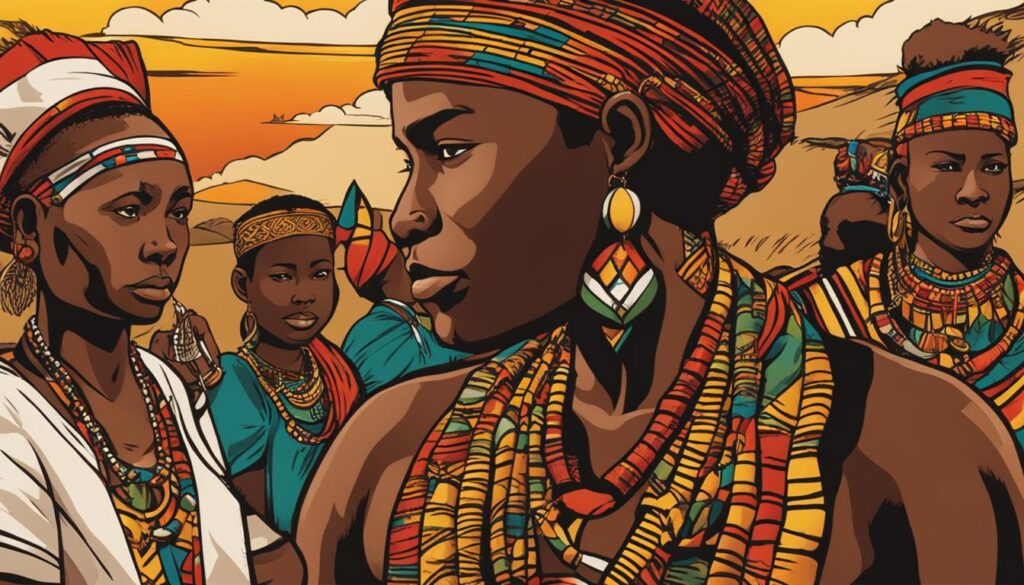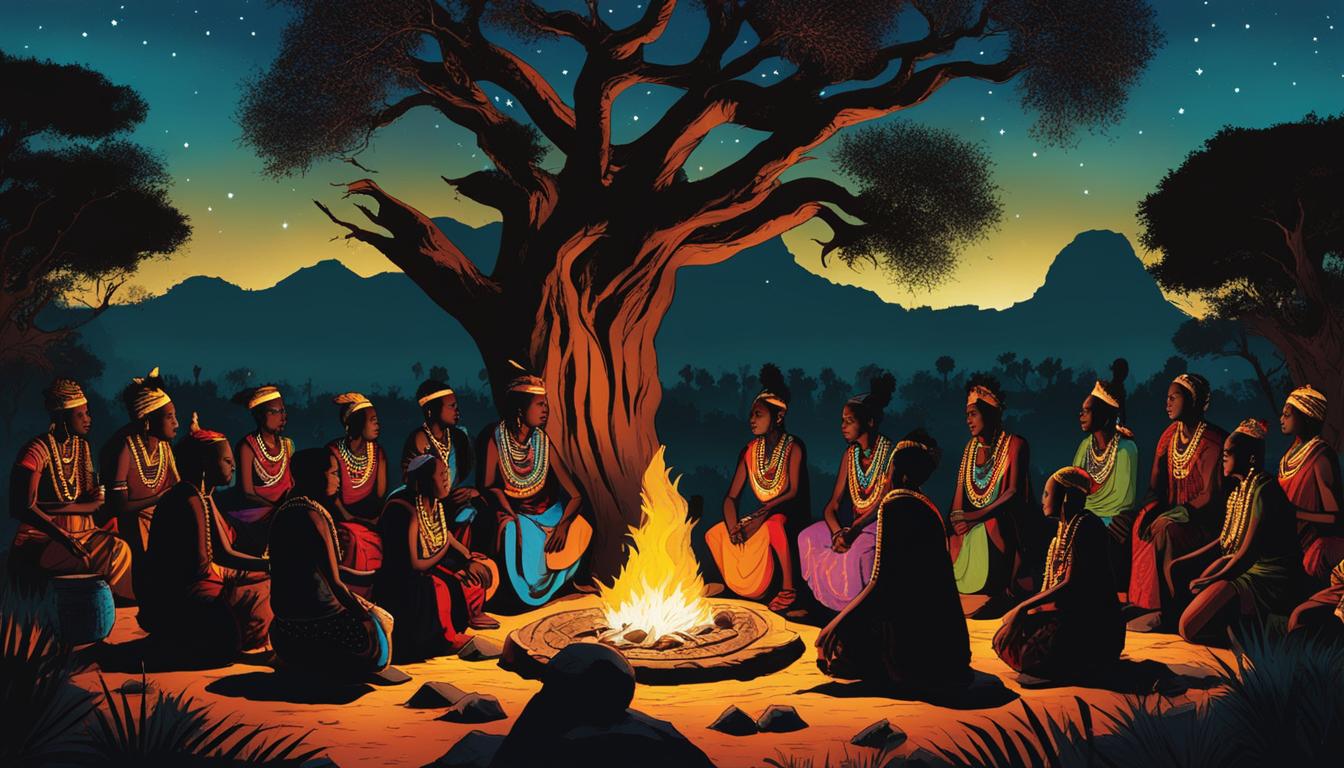Did you know that the Chimanika Language, spoken by the Chimanika tribe in Mozambique, is an incredibly unique dialect with its own distinct linguistic features?
From its fascinating vocabulary and pronunciation to its rich cultural significance, the Chimanika Language offers a window into the heritage and identity of this vibrant tribe. In this article, we will delve into the history, development, and cultural significance of the Chimanika Language, exploring how it has shaped the communication and traditions of the Chimanika people.
Chimanika Language History and Development
The history and development of the Chimanika Language can be understood within the cultural and historical context of the Chimanika tribe. Over time, the language has evolved, shaped by various factors such as migration patterns and interactions with neighboring communities. The linguistic features of Chimanika, including its grammar, syntax, and vocabulary, showcase the unique cultural heritage of the tribe.
Throughout history, the Chimanika tribe has experienced shifts in their settlement patterns, leading to encounters with diverse linguistic influences. These interactions have contributed to the development of the Chimanika Language, blending elements from other languages while maintaining its distinct identity.
The Chimanika tribe’s migration patterns played a crucial role in shaping the language. As they moved across different regions, they encountered new cultures and languages, leading to linguistic adaptations and incorporations. The Chimanika Language’s development reflects this rich history of cultural exchange and adaptation.
“Our language tells the story of our ancestors and their journey through time,” says Chief Mufaro, a prominent figure within the Chimanika tribe. “Each word carries the weight of our heritage, connecting us to our roots and preserving our unique identity.”
Throughout the centuries, the Chimanika tribe has embraced their language as a symbol of resilience and cultural pride. The Chimanika Language stands as a testament to the tribe’s ability to adapt, survive, and maintain their distinct cultural heritage in the face of various external influences.
The linguistic features of Chimanika are an intriguing reflection of the tribe’s history. The grammar and syntax exhibit intricate patterns and structures, showcasing the Chimanika tribe’s sensitivity to their environment and the natural world. The vocabulary, enriched by generations of storytelling and oral traditions, captures the essence of the Chimanika people’s worldview.
The Chimanika Language’s development and evolution continue to this day, as the tribe embraces the challenges and opportunities of the modern world without losing sight of their cultural identity. It serves as a bridge between generations, connecting the Chimanika people to their ancestors and reinforcing their cultural bonds.
Chimanika Language and Cultural Significance
The Chimanika Language holds great cultural significance within the Chimanika tribe and the broader context of Mozambique. As one of the many dialects spoken in the country, it contributes to the rich tapestry of linguistic diversity.
The Chimanika language is an integral part of the tribe’s cultural identity, serving as a means of communication, preservation of traditions, and expression of their unique worldview. It is through this language that the Chimanika tribe connects with their ancestors, passes down ancestral knowledge, and maintains a strong sense of cultural belonging.
Additionally, the Chimanika Language plays a crucial role in fostering social cohesion within the tribe. It acts as a unifying force, strengthening bonds among community members and promoting a shared understanding of their history, customs, and values.
“The Chimanika Language is like a thread that weaves together the fabric of our culture, connecting us to our past, grounding us in the present, and guiding us into the future.” – Elder from the Chimanika tribe
Mozambique, with its diverse range of dialects and languages, is a testament to the country’s cultural mosaic. The Chimanika Language, with its unique linguistic features and vocabulary, adds depth and richness to this linguistic tapestry.
To better understand the cultural significance of the Chimanika Language, it is essential to explore the different dialects spoken within the Chimanika tribe. These dialects, while rooted in a common linguistic foundation, often hold subtle variations that reflect regional influences and historical developments. By studying these dialects, researchers gain valuable insights into the evolution of language and its intricate connection to culture.
Dialects of the Chimanika Language
| Dialect | Location | Linguistic Features |
|---|---|---|
| Chimanika Central | Central Chimanika region | Distinct vocabulary and pronunciation |
| Chimanika Coastal | Coastal Chimanika region | Influenced by regional trade and contact with other cultures |
| Chimanika Highlands | Highlands of Chimanika | Unique grammatical structures and syntax |
| Chimanika Riverine | Riverine areas of Chimanika | Vocabulary enriched by the river ecosystem |
These dialects highlight the intricate relationship between language, geography, and cultural heritage. Each variant of the Chimanika Language carries its own nuanced characteristics, further contributing to the multifaceted nature of Chimanika culture.
In conclusion, the Chimanika Language is not merely a tool of communication but a key element in shaping the cultural identity of the Chimanika tribe in Mozambique. Its significance extends beyond linguistic boundaries, serving as a bridge to the past and a beacon for future generations.

Chimanika Language Speakers
The Chimanika Language is predominantly spoken by members of the Chimanika tribe, residing in Mozambique. This unique dialect plays a vital role in their everyday lives, serving as the primary means of communication within the community.
“The Chimanika Language has deep roots within our tribe, acting as a bridge that connects us to our ancestors and cultural heritage,” says Chief Mabasa, a prominent figure in the Chimanika community.
From informal conversations to important social gatherings and traditional ceremonies, the Chimanika Language forms the backbone of communication among tribe members.
Moreover, the Chimanika Language serves as a medium for the transmission of cultural knowledge, enabling the tribe to preserve their traditions, stories, and ancestral wisdom.
The number of Chimanika language speakers contributes significantly to the linguistic diversity of Mozambique. As the country celebrates its multicultural heritage, the Chimanika dialect stands as a testament to the richness and complexity of languages within its borders.
Linguistic Diversity in Mozambique
Mozambique is renowned for its linguistic diversity, with numerous dialects spoken by different ethnic groups across the country. This rich variety of languages reflects the cultural vibrancy and historical significance of Mozambique’s communities.
According to a recent survey conducted by the Ministry of Culture and Linguistics, there are approximately 43 distinct languages spoken in Mozambique, each with its own unique characteristics and contributions to the nation’s cultural heritage.
| Language | Ethnic Group |
|---|---|
| Chimanika | Chimanika Tribe |
| XiRonga | Ronga Tribe |
| Emakhuwa | Makhuwa Tribe |
The linguistic diversity in Mozambique serves as a testament to the country’s cultural tapestry and the indigenous knowledge systems embedded within its communities.
As Chimanika language speakers continue to embrace and pass down their linguistic heritage, they contribute to the preservation and celebration of cultural identities in Mozambique.
Conclusion
The Chimanika Language holds a significant place in the cultural identity of the Chimanika tribe in Mozambique. Its unique linguistic features and historical development are a testament to the rich heritage of the tribe and contribute to the linguistic diversity of the country. As one of the many dialects spoken in Mozambique, the Chimanika Language plays a crucial role in preserving and celebrating the diverse cultural fabric of the nation.
Through the Chimanika Language, the tribe not only communicates but also preserves their traditions and worldview. It serves as a medium through which the Chimanika people pass down their cultural knowledge from one generation to another. The language acts as a bridge that connects them to their ancestors and maintains their cultural continuity.
Furthermore, the Chimanika Language represents the broader significance of dialects in Mozambique. It showcases the multicultural heritage of the country and highlights the importance of valuing and protecting linguistic diversity. Preserving and promoting dialects like Chimanika not only strengthens cultural identity but also fosters a sense of inclusion and respect for all Mozambicans.
In conclusion, the Chimanika Language is more than just a means of communication for the Chimanika tribe. It is an embodiment of their cultural identity, a symbol of their heritage, and an integral part of the linguistic tapestry that makes Mozambique so diverse and vibrant.
